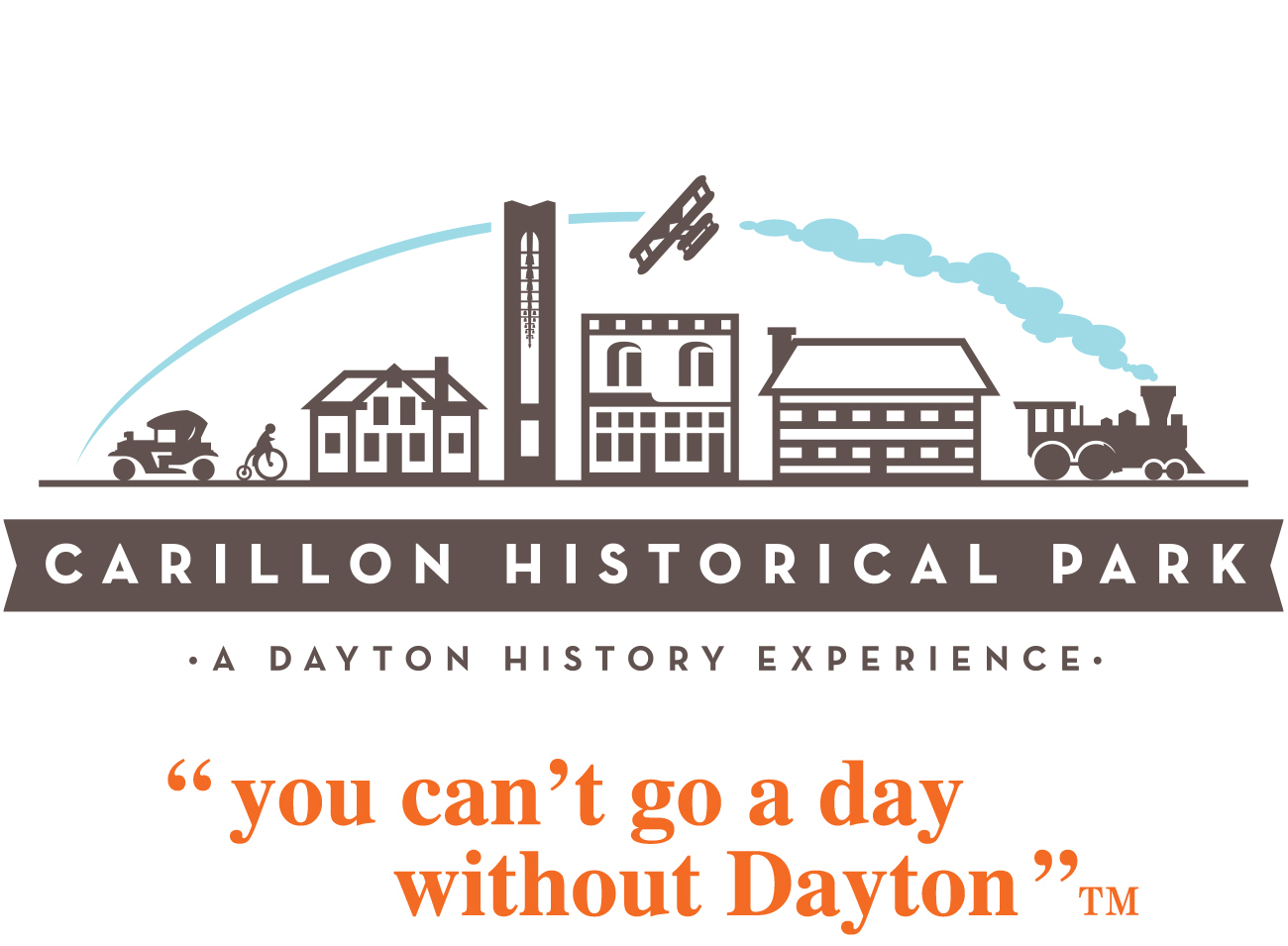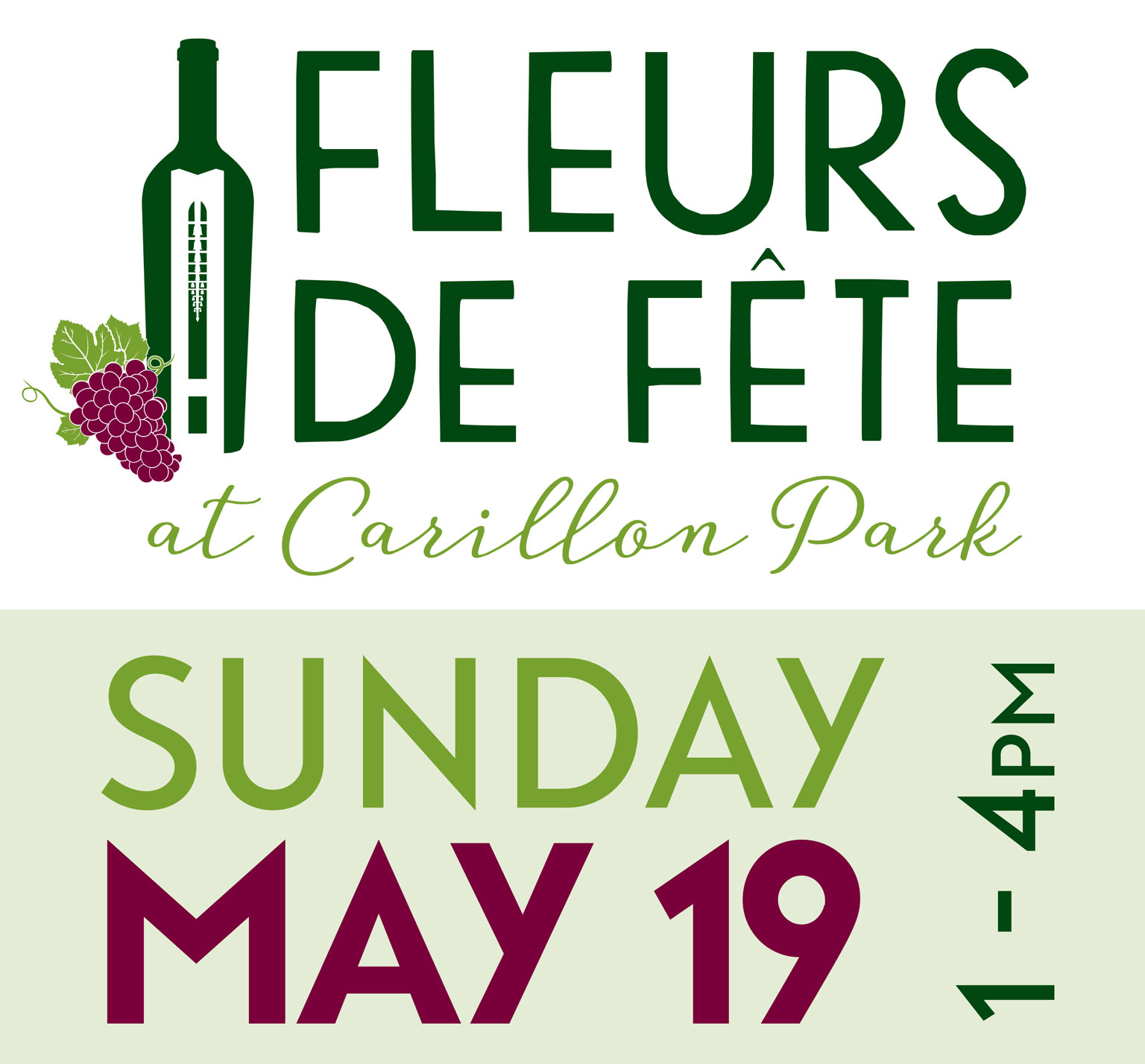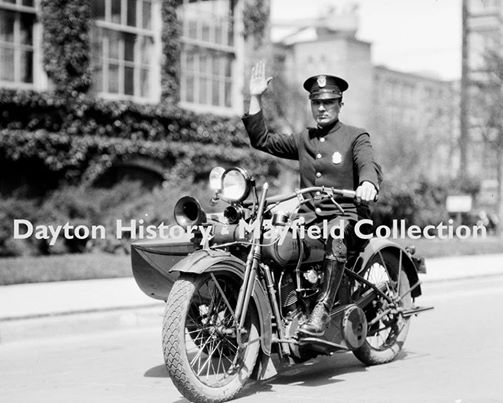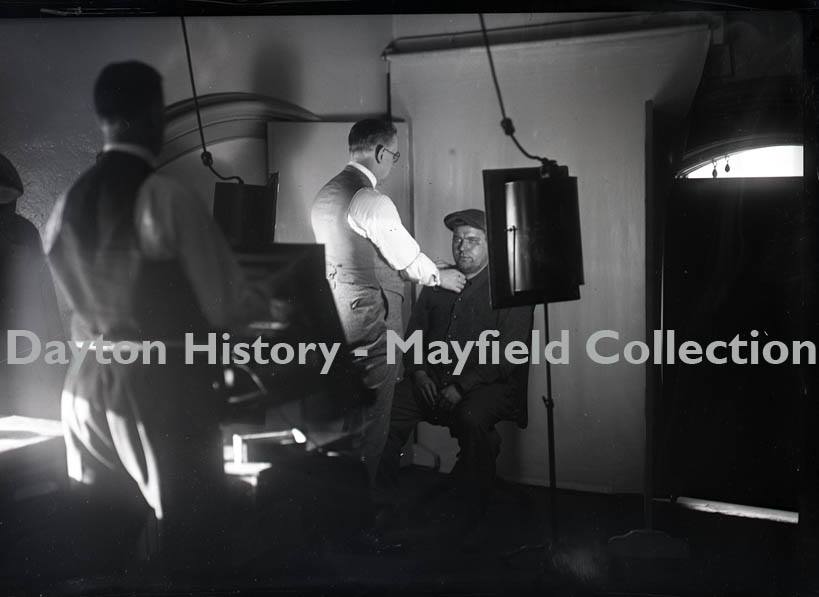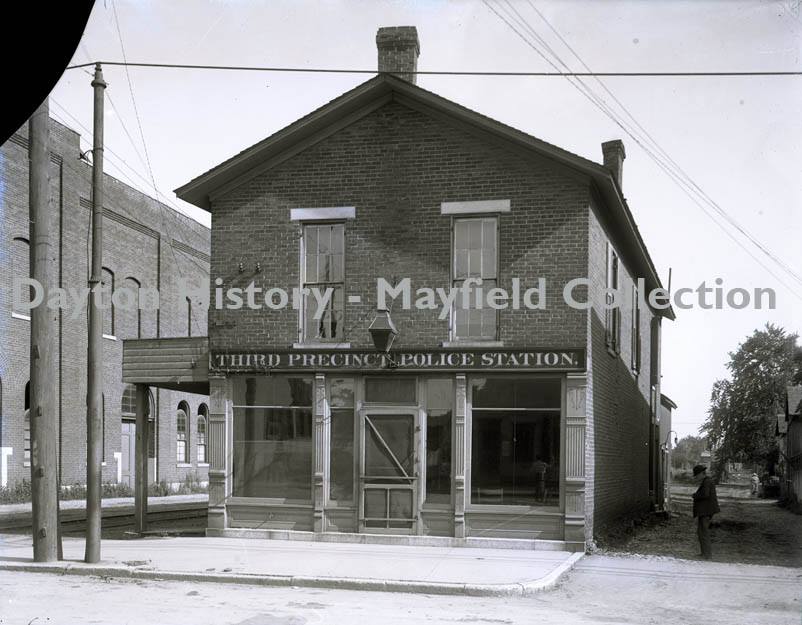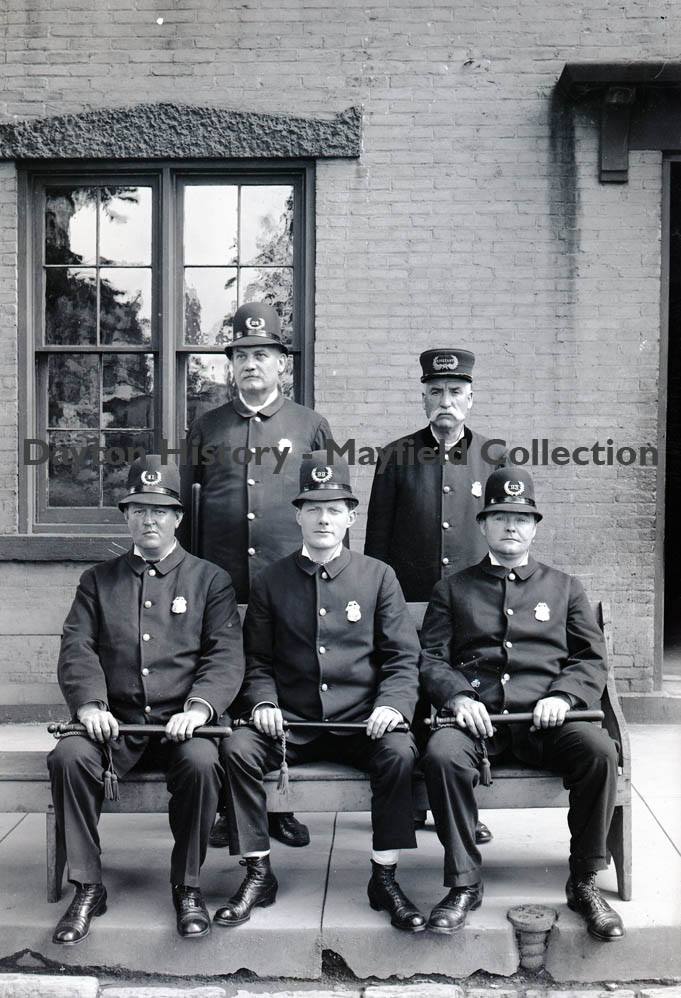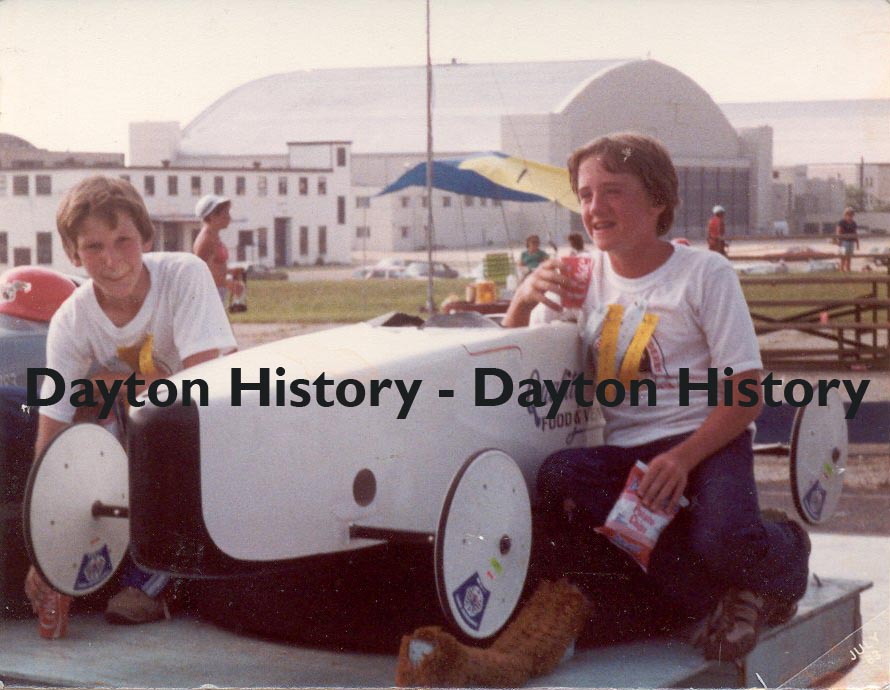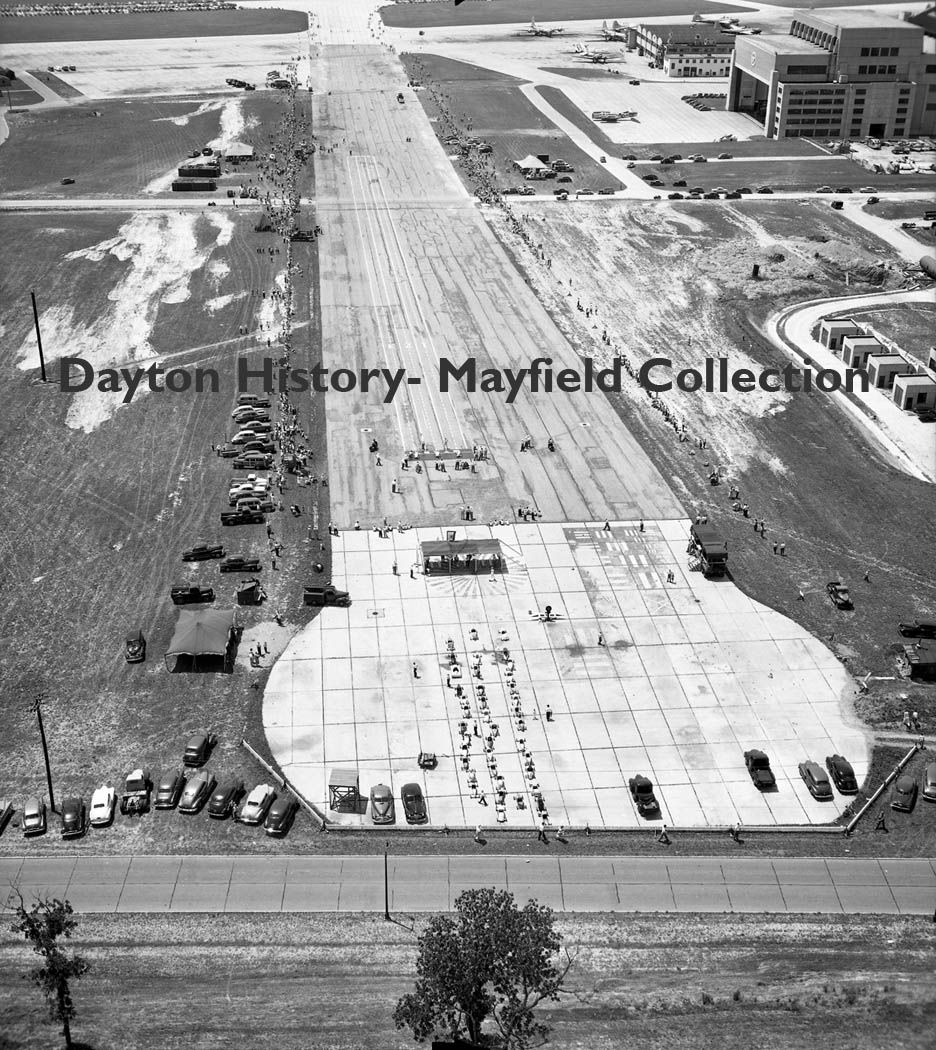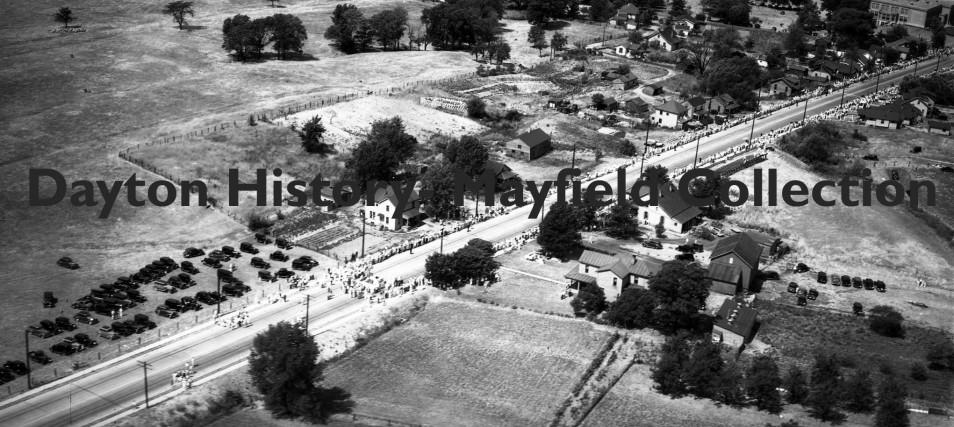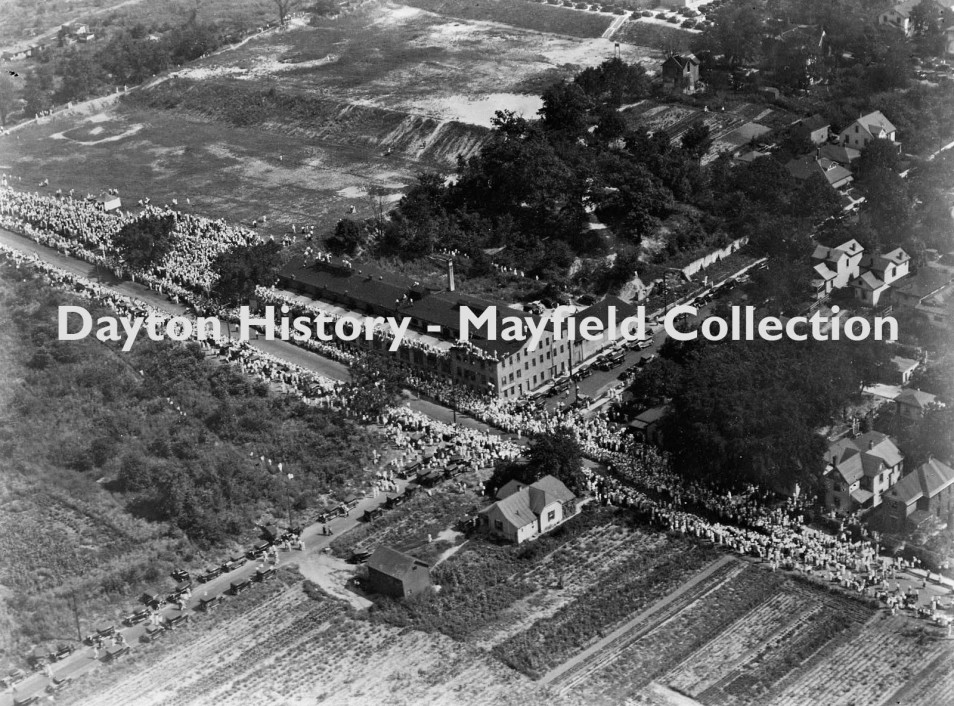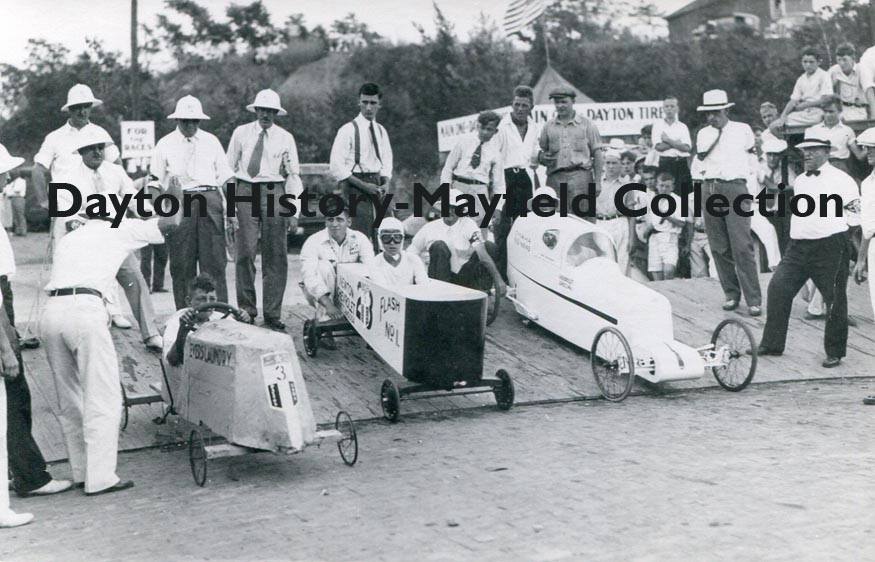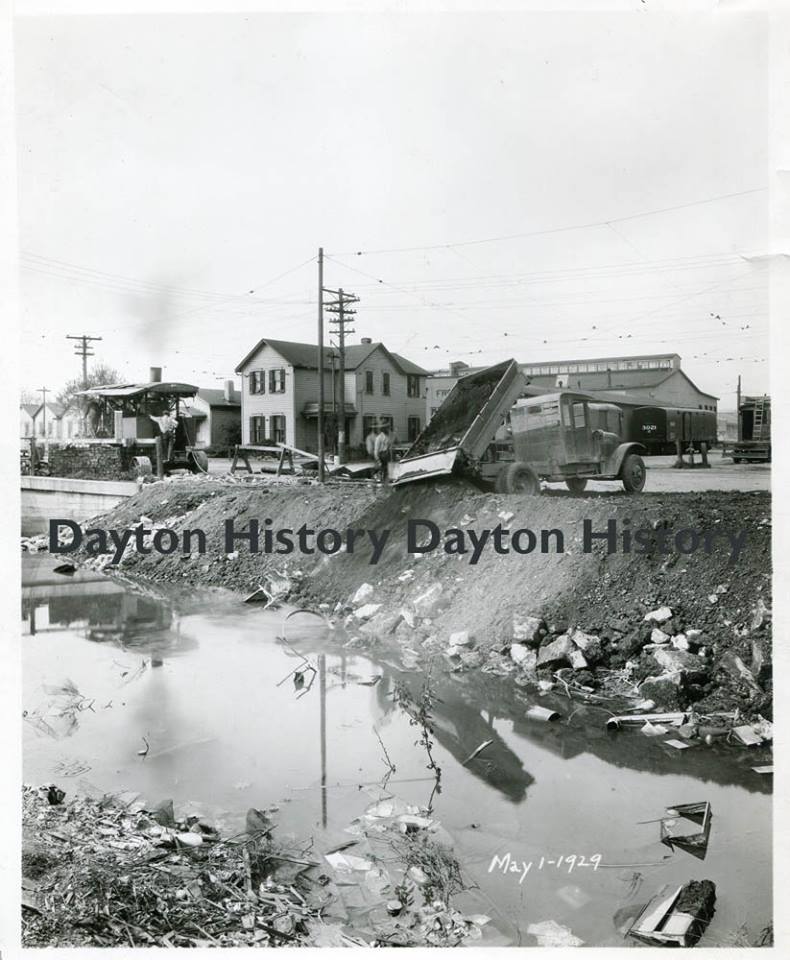ArtiFACT Friday- September 26, 2014
Motorcycle Police…
On August 17, 1883, the Dayton Police Force adopted its first form of mobile transportation, a police patrol wagon. The wagon served as a multi-purpose conveyance with duties including ambulance removal, prisoner transfer and patrolman transport to assignments. The first Patrol House established for the care and storage of the wagon was a vacant fire house located at 15 Brown Street, near Fifth Street. As years passed by and other means of transportation came onto the national scene, the Dayton Police Department adopted these modes and incorporated them into their policing activities. Patrolmen walking their beats would later be augmented with bicycles and later, motorcycles by February 1911. By the late teens and early 1920s, there was also sparing use of automobiles as the department adapted and as city budgets would allow. Featured in this image, circa 1920s, is an officer on his motorcycle with a sidecar. This photograph is from the NCR Archive at Dayton History.
To see other historical images from our collection, search our Digital Photo Archive.
ArtiFACT Friday- September 19, 2014
Photo Identification Bureau…
In 1891, police headquarters took up permanent residence on the second floor of the Market House, located at South Main and Market Streets (the current location of the RTA Central Hub). The headquarters housed the police command, several detectives, and the Bureau of Identification (B of I). Crime fighting techniques have evolved over the years and the identification bureau has been a key component in this city’s fight. As early as 1879, the Dayton Police Commission began requiring that photographs be taken of “noted criminals and suspicious characters…” Dayton’s B of I followed this directive by maintaining such a file, commonly called “the rogues’ gallery.” Pictured here is a suspect who is being photographed by the B of I as an officer is placing an identification number on the suspect’s collar. This early mug shot would have been taken sometime between 1927 and 1932. This photograph is from the William Preston Mayfield/Marvin Christian Collection at Dayton History.
To see other historical images from our collection, search our Digital Photo Archive.
ArtiFACT Friday- September 12, 2014
Third Precinct Police Station…
During the century from 1805 to 1904, law enforcement in Dayton grew 100-fold, from one town marshal to one hundred patrolmen. Over the next century, we would see those numbers rise again, increasing to over 500 police officers patrolling the streets of our fair city. In 1896, the 1st Precinct Police Station was located in the 200 block of East Sixth Street, but the ever growing city of Dayton needed a police force that could keep up with this growing demand. To meet those needs, two more station houses were added: a 2nd Precinct Police Station was established at 2 Linden Avenue at the corner of East Third Street, and a permanent 3rd Precinct Station was housed at 1828 West Third Street near King Street (later Western Avenue and now known as James H. McGee Boulevard). Pictured here is an image of the Third Precinct Station house. This photograph is from the William Preston Mayfield/Marvin Christian Collection at Dayton History.
To see other historical images from our collection, search our Digital Photo Archive.
ArtiFACT Friday- September 5, 2014
Dayton’s Police Force…
By 1867, Dayton was a full-fledged city that had grown by leaps and bounds. With a population of over 25,000, Dayton was ranked the 45th largest city in the nation. On March 29th of that same year, the state’s legislature granted Dayton the right to organize a police department, as only first-class cities were entitled to do. The newly formed position of ‘Police Patrolmen’ was most often filled by returning Civil War veterans. Prior to that, Dayton’s only means of protection was through its township constable and its own armed citizens. Pictured here are some of Dayton’s finest, circa 1912, sporting their “Peeler” police hats and showing off their wooden clubs, also known as batons. Newly appointed officers at that time were required to buy their own uniforms and firearms, but they were issued hats, clubs, club cords, whistles and badges as standard equipment. This photograph is from the William Preston Mayfield/Marvin Christian Collection at Dayton History.
To see other historical images from our collection, search our Digital Photo Archive.
ArtiFACT Friday- August 29, 2014
Greater Dayton Soap Box Derby Junior Champion poses with his car, c. 1983…
In 1983, the soap box derby celebrated its 50th anniversary in Dayton. Over those first few decades, many changes had occurred to the race. In 1946, the color barrier was broken and by 1971, the race had expanded regulations to allow young girls the opportunity to compete as well. Twenty-five area youngsters completed in two divisions during the 1983 season; all of them vying for the city title on the Area B Acceleration Ramp derby track at Wright-Patterson Air Force Base. In the Junior Division, driving car number 81, 11 year-old Steve Toller won the city junior championship title. Captured in a candid moment, this image shows Toller posing by his winning racer. This photograph is from the Image Collection at Dayton History.
To see other historical images from our collection, search our Digital Photo Archive.
ArtiFACT Friday- August 22, 2014
Dayton’s Soap Box Derby held at Wright-Patterson Air Force Base, c.1949…
Thanks to help from President Franklin D. Roosevelt’s Works Progress Administration, a championship soap box derby track was built in Akron, Ohio, resulting in the move of the All-American Soap Box Derby race from Dayton to northern Ohio. Despite the move, Dayton continued to host races for years, sending its city champs on to Akron for a chance to compete for the national title. With the onset of WWII, the tournament officially suspended activities until the summer of 1946, encouraging everyone to concentrate on the war effort. In 1949, Dayton’s race was held at Wright-Patterson Air Force Base, as can be seen in this aerial image, by photographer William Preston Mayfield. Here, the race track and starting line are clearly visible with a large hangar and several airplanes parked off to the right. This photograph is from the William Preston Mayfield/Marvin Christian Collection at Dayton History.
To see other historical images from our collection, search our Digital Photo Archive.
ArtiFACT Friday- August 15, 2014
View of the Soap Box Derby race track on Germantown Street hill, July 1936…
By 1936, the All-American Soap Box Derby Race had moved north, to Akron, Ohio, and Dayton returned to hosting the Dayton Daily News Soap Box Derby. Daytonians knew they were on to something good as the sport was continuing to spread every year. As a matter of fact, the popularity of the event had even swept across oceans, with contests being held in Puerto Rico and South Africa, just to name a few. Meanwhile, back home, on a Sunday afternoon in July of that year, 170 boys competed, racing their home-made cars down the 900-foot course on Germantown Street hill. An estimated crowd of 15,000 spectators gathered along the track to watch as 13 year-old Eugene Yount sped past the crowd at nearly 30 miles per hour, finishing the course in just 31 seconds. This aerial image, taken by photographer William Preston Mayfield, shows nearly the entire course along Germantown Street hill, with the starting line in the lower left foreground. This photograph is from the William Preston Mayfield/Marvin Christian Collection at Dayton History.
To see other historical images from our collection, search our Digital Photo Archive.
ArtiFACT Friday- August 8, 2014
Spectators line the track of the Soap Box Derby race on Burkhardt Avenue, c. 1934…
In 1933, over 40,000 spectators lined the three-eighths of a mile long track to watch the first ever Soap Box Derby Race. The success of that event spurred Myron Scott, the derby’s creator, to seek out event sponsorship from the Chevrolet Motor Company in Detroit. The following year, in 1934, the newly named All-American Soap Box Derby was a two-day event, with over 100 prizes awarded and more than 350 youngsters from over 33 cities around the country participating. The prizes ranged in value; including everything from small trophies to a motorized Custer car to a four-year college scholarship. This image, captured by photographer William Preston Mayfield, shows just a small part of the massive crowd of spectators who had gathered to watch the race that year along Burkhardt Avenue. Incidentally, this would be the last year the All-American Soap Box Derby would be held in Dayton. This photograph is from the William Preston Mayfield/Marvin Christian Collection at Dayton History.
To see other historical images from our collection, search our Digital Photo Archive.
ArtiFACT Friday- August 1, 2014
Soap Box Derby Race, c. 1934…
Did you know that the soap box derby race, once deemed the “Greatest Amateur Racing Event in the World,” originated here in Dayton, Ohio? One summer day in 1933, Dayton Daily News photographer Myron E. Scott happened upon a small group of boys who were racing home-made wooden cars down Big Hill Road near Oakwood, Ohio. Thinking this would make a great story, Scott decided to organize a race for “anything on four wheels that will coast.” With great fanfare, bands and parades included, the first official soap box derby race, known as ‘The Daily News Soap Box Derby,’ was held on August 19, 1933. More than 300 youngsters gathered together to race that day, most of them driving cars put together from spare parts and other items scrounged from local junk yards. Sixteen year old Oakwood resident, Randall Custer, won that very first derby, driving his three-wheeled coaster nicknamed the “Flashing Yellow Comet.” This image, by photographer William Preston Mayfield, was taken the following year during the 1934 All-American Soap Box Derby race. This photograph is from the William Preston Mayfield/Marvin Christian Collection at Dayton History.
To see other historical images from our collection, search our Digital Photo Archive.
ArtiFACT Friday- July 25, 2014
Filling of the Canal 1929…
After profits began to slip, the State of Ohio decided in 1861 to lease the canals to private interests in hopes they would again become profitable. Unfortunately, this was not to be as the railroad industry had experienced exponential growth within the last two decades, thereby leaving the canals nearly obsolete. Business was so bad in fact that the lessees returned the public works to the state by 1878, in worse condition than before. Public outcry began insisting that the once heralded canals be now disposed of because they had become nothing more than “open sewers” and “detrimental to property values”. Slowly then, the canals were either sold off, mostly to railroads for rights of way, or abandoned all together. For the sections of the canal that were not sold to the railways, they were most often filled in and made into streets, sewers and public highways. Such was the case with part of the Miami and Erie Canal that ran through downtown Dayton, which today is known as Patterson Boulevard. Named for John H. Patterson who had once been a canal toll collector and later in life, an outspoken advocate for the disposal of the outdated canals, Patterson Boulevard runs from Monument Avenue southward towards Kettering. This image shows workman actively filling in what remained of the canal in May of 1929. This week’s photo is from Dayton History’s Image Collection.
To see other historical images from our collection, search our Digital Photo Archive.


